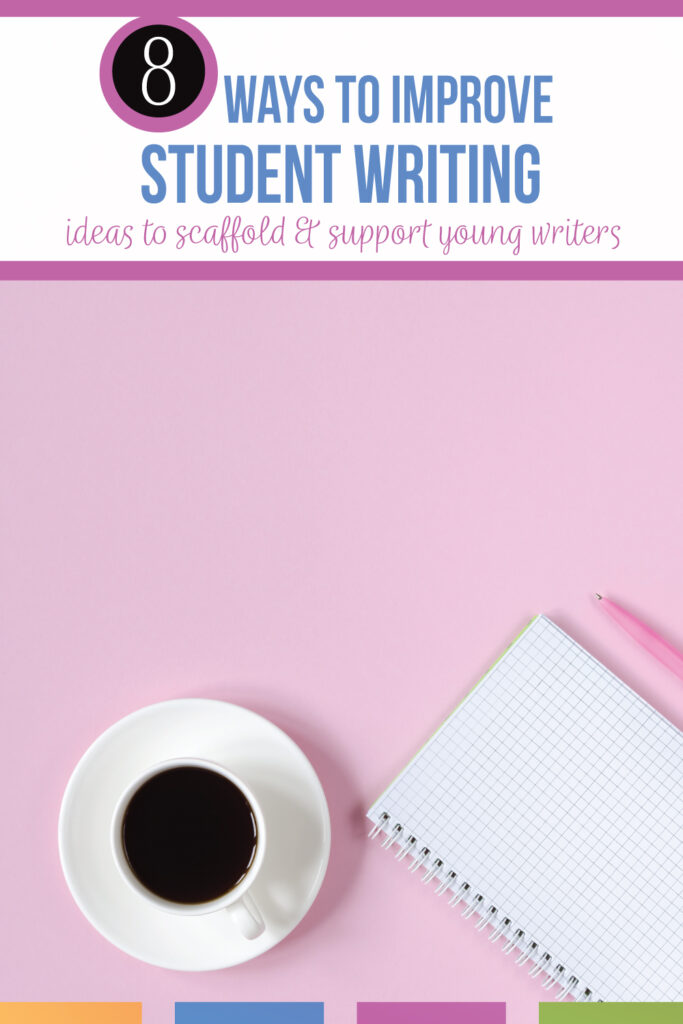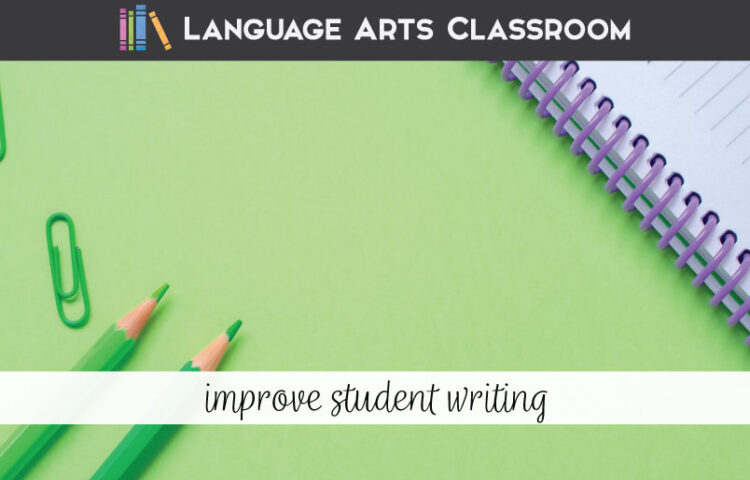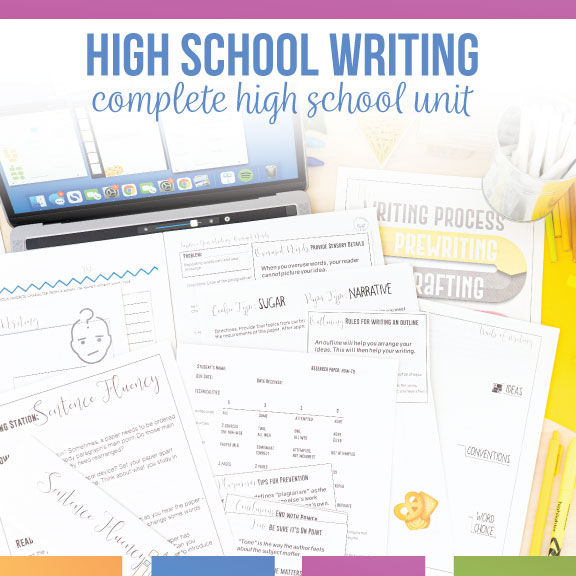What are methods to improve student writing? Here are approaches I take.
Teaching methods for student writing evolve. On a large scale, educators teach students to write for college and to use proper tone in emails. We no longer teach the different types of snail mail letters.
On a smaller scale, (hopefully) each teacher’s ideas about teaching writing evolve. I personally know that to improve student writing, my methods have evolved. Here are eight quick ways that I’ve found success in helping students with their writing.
Look at each sentence.
Ask students to take revision one sentence at a time.
This helps in two ways. One, students become less overwhelmed. Students have time to breathe and reflect on a certain segment.
Two, students can see improvement. Rather than tackling an entire paragraph (which they’ll need to do later with flow/voice), students can see success quickly with sentences.
Look:There are many reasons people text and drive. Switch the sentence around with students, and explain approaches for fixing sentences. “There are” is a weak construct, and the student writer misses the opportunity to add voice. With a few small changes, improve the sentence: People text and drive for a variety of reasons—none of them acceptable. Show students that with small changes and switches, their writing will vastly improve.
Work on organization.
Organization can be a tough concept to tackle! I complete a goofy organizational activity with students to build upon prior knowledge. After students organize a paper with me, we tackle their paper topics.
If students are writing an argumentative paper, and you’re trying to support them accomplish “an organization that establishes clear relationships among claim(s),” you might break down each claim with them. Ask them to distinguish between similar claims and perhaps combine. If a claim is interesting but perhaps not aligned with the thesis, discuss taking that claim away. (Sometimes that hurts!)
An argumentative paper about the government providing more funding for mental health services might include a jumble of ideas: funding for schools, diagnoses, successful programs in hospitals, grants, eligibility, and more. While they all relate to mental health, they can’t create an organized argumentative paper. Walking students through their ideas shows them that.
Eliminate linking verbs.
Improve student writing quickly by teaching to replace linking verbs with action verbs. The most effective method? Hand all students a highlighter and ask them to find linking verbs in their papers.
Of course, some linking verbs should stay. Students should replace the majority though. Eliminating linking verbs will improve student writing. I often model finding linking verbs and replacing them. Then, students and I brainstorm a list of power verbs. Together, we write sample sentences starters: The author arrives at this conclusion. . .
You can easily show students that power verbs (often, not always) improve sentences.
Find (and replace) overused words.
Many teachers hang an “overused words” poster, and many students have memorized every word on the list. Still. Students put good, things, and stuff in their papers frequently. Can writers use those words? Sure, sometimes, but not in every other sentence.
As above, I distribute highlighters. I ask students to find tired words in their papers or in a peers’ papers. Then we brainstorm ways to change those words. On a deeper level, I stress the importance of improving vocabularies.
Show students how to use the thesaurus without abusing the tools; don’t just plug in words! Students likely possess a strong vocabulary, but they need guidance for thinking through the process.

Compile introductions and conclusions.
This is easy to complete anonymously, which makes students more comfortable when they work. Copy and paste every paper’s introduction (or conclusion) into Power Point (or whatever program). Discuss—in a spirit of cooperative learning, of partnerships—strengths and weaknesses. This shows students their areas where they should continue on that track and areas where they should focus.
After reading through a few, you might have a list of common errors. That might branch into a new lesson. Add graphic organizers to help students flesh out their ideas.

Model writing for students.
I’ve blogged before about writing papers with my students. For some reason, students think adults and professional writers write and TA-DA! No edits required!
Once students realize that adults follow the writing process too and spend time editing and revising, they are more willing to embrace each step.
Students see the struggles and the outcomes of an adult writing and realize that writing isn’t perfect the first time. For instance, I almost always brainstorm with students. I show them how I discard some ideas and organize others. If I believe I have a wonderful idea and I can’t use it, I share my disappointment with them. I relate to them that each step of the writing process brings challenges.

Avoid cliches.
Young writers use cliches because they are unaware that the use limits their writing’s impact. Cliches are overused expressions, and students can develop descriptive writing with a bit of coaching. When I conference with students, I identify cliches and ask them to walk through a simple process of thinking of new expressions.
With an exploration of the actual meaning and larger picture of their message, students can craft new ideas and ditch the cliche.

Read.
Good writers, read. Published authors say the same mantra over and over: You have to read to write.
Before students and I work on an assignment, we read a mentor text together. When students have spare time in class, I encourage them to read. Reading and writing are intertwined together, and we should share that idea with students.
Sometimes, stepping back from a writing activity and reading brings a fresh perspective to the assignment.

Over time, these methods have become my go-to ways to improve student writing. I’ve used others, with these consistently being the most effective. As always, I’d appreciate comments for what writing methods help your students. What help you in the classroom concerning writing lessons?






